Visit Balpakram National Park To Get An Experience To Remember
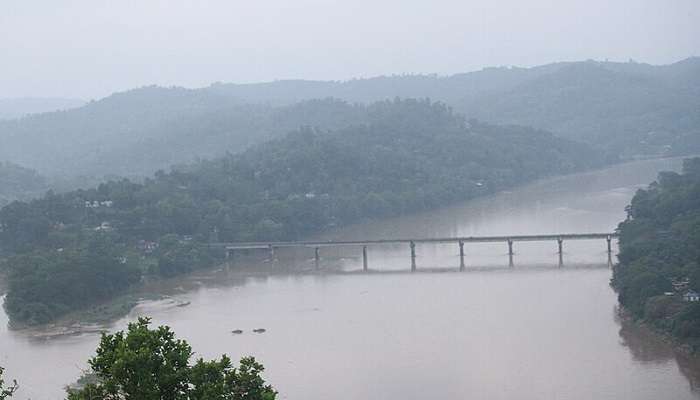
Balpakram National Park is a national park to the south of Garo Hills in Meghalaya, India, located at an altitude of about (3,000 feet) close to the international border with Bangladesh. It was inaugurated in December 1987 and provides habitat for barking deer, Asian golden cat, Bengal tiger, marbled cat, wild water buffalo, red panda and Indian elephant. Balpakram means “land of the eternal wind” according to the myth of the Garo people. We’ve curated a list of all you need to know about Balpakram National Park for when you decide to visit Meghalaya.
About The National Park
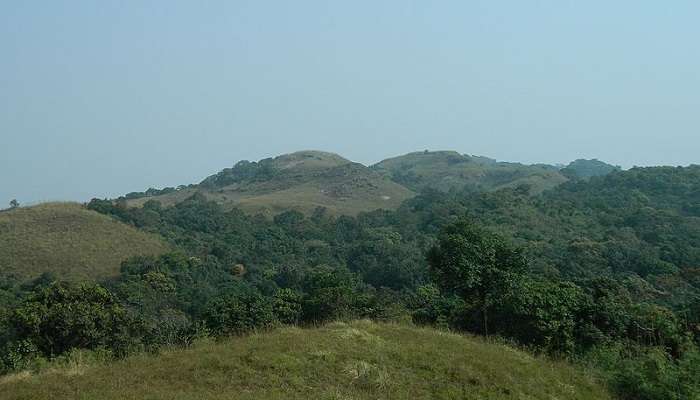
Nestled in the South Garo Hills of Meghalaya, India, Balpakram National Park is a hidden gem waiting to be discovered by adventure seekers and nature enthusiasts. This rugged wilderness, often called the “land of eternal wind,” offers a unique blend of natural beauty, rich biodiversity, and intriguing folklore. Spread across 220 square kilometres, Balpakram’s landscape is a testament to nature’s artistry. Deep gorges, cascading waterfalls, and dense forests create a dramatic backdrop for your explorations. The park’s centrepiece is the Balpakram Plateau, a vast tabletop formation that local Garo tribes believe to be the “land of the dead spirits.” Wildlife enthusiasts will be thrilled by the park’s diverse inhabitants.
Keep your eyes peeled for rare species like the red panda, Indian bison, and clouded leopard. Birdwatchers can spot colourful hornbills and elusive peacock pheasants among the park’s 200+ bird species. Balpakram isn’t just about natural wonders; it’s steeped in mystique. Ancient rock formations bear mysterious carvings, and eerie natural phenomena like the “Boldak” (a naturally formed bridge) fuel local legends. The park’s cultural significance to the Garo people adds another layer of fascination for curious travellers. While Balpakram’s remote location makes reaching it challenging, the journey becomes part of the adventure. As you traverse winding roads through lush hills, you’ll feel the outside world fading away, replaced by the promise of an unforgettable encounter with one of India’s most captivating wild spaces.
Must Read: Resorts Near Cherrapunji
Exploring The National Park
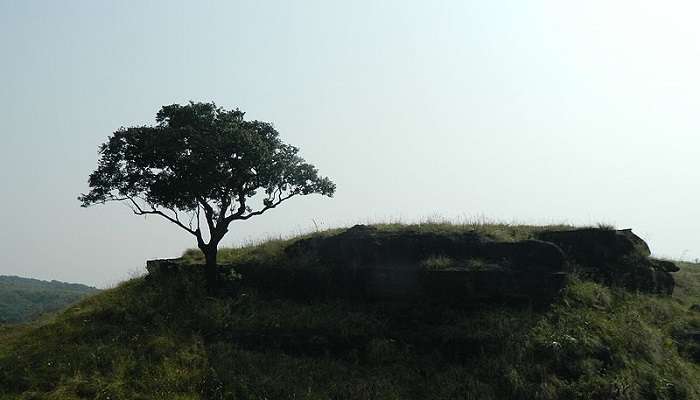
Boldak Matchu Karam is a tree (Schima wallichii) where the spirit of the departed soul would tie his cow, which was given to the deceased by his relatives to carry his belongings into the afterlife. It is believed that the spirits would tie their cows to this Boldak tree trunk while they wash off the ashes of cremation from their bodies in the nearby Chidimmak black water pool. What’s puzzling is that the tethering mark of the rope around the tree trunk can still be seen today.
Chitmang Peak is the 2nd highest peak in Garo Hills. It is about 1029 meters above sea level. Chitmang Peak is also known as Waimong by the local Atong tribes, and the Hindus call it Kailash Pahar. The Chitmang Peak changes its shape depending on where you are looking at it. It will look like a dome if you are looking from the Sibbari or Rewak / Karukol side. If you look from Rongara’s side, it will look like a sleeping giant. From the Balpakram plateau, it will look like a rectangular box (See above). If you are lucky, you can see waterfalls on the foothills of Chitmang Peak during the rainy season.
Legends And Beliefs Of Villagers In The National Park
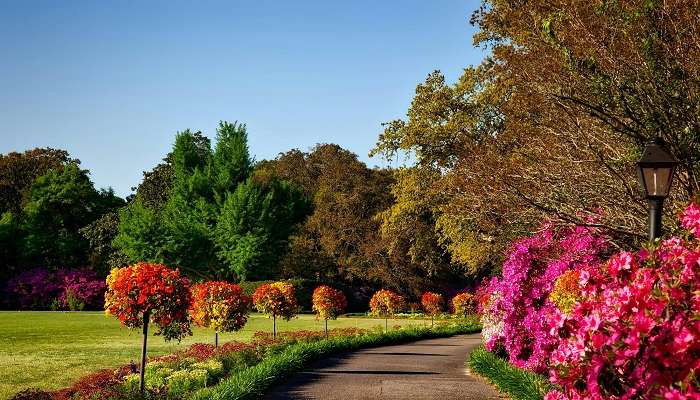
A small hillock on the edge of the Balpakram cliff called Rangdokram A’bri. It is believed that when a new spirit comes to Balpakram, musical instruments like the gongs, flutes, drums, and cymbals are played in this hillock to call all the spirits and welcome the newcomer to Balpakram. Gongs are also sounded to call for a meeting at the nearby Me’mang Melaram or the meeting place of the spirits. Villagers walking past this hillock claimed to have heard faint sounds of musical instruments and sounds of human voices murmuring near this hillock. Dikki ni ring, or Dikki’s boat, is a stony mound on the far north end of the Balpakram ridge, near the Matcha Nokpante. According to the folklore, Dikki, the elder brother of Bandi, was rowing his boat towards his home on one stormy night. He tried his best to row against the strong wind and choppy waters. Dikki tried all night but lost his strength, and the boat overturned. Dikki swam away to safety, but the overturned boat turned to stone as dawn broke. The stony mound resembles the overturned boat and can still be seen today at Balpakram.
Suggested Read: Hotels And Resorts In Shillong
Best Time To Visit Balpakram National Park
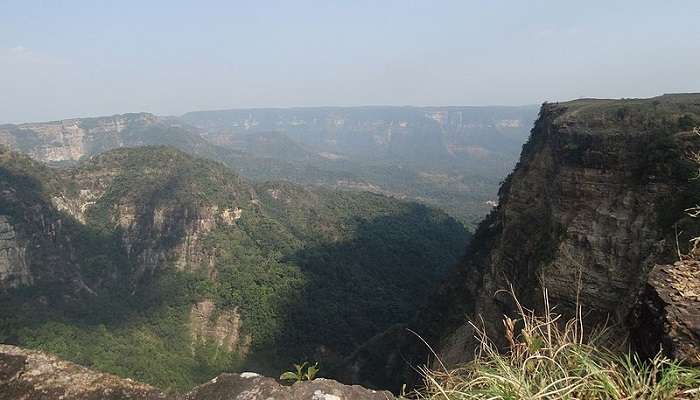
The best time to visit Balpakram is from November to mid-April. However, many tourists prefer to visit from March to May to see the Dike or the ground orchid bloom. Balpakram is hard to access when the rain comes pouring due to mud and slush. But these are what adventures are made of.
How To Reach The National Park
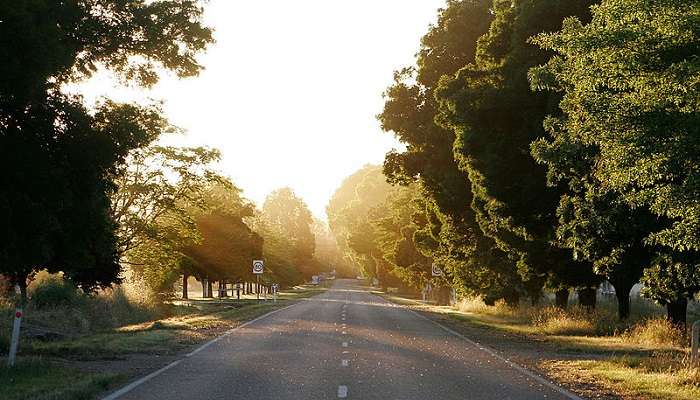
By Air:
The nearest airport to Garo Hills is Lokpriya Gopinath Bordoloi International Airport in Guwahati, Assam. You can take a taxi or bus to Garo Hills from there. The journey from Guwahati to Tura, the largest town in Garo Hills, is about 220 km and takes around 5-6 hours by road.
By Rail:
The closest major railway station is Guwahati Railway Station. After reaching Guwahati, you’ll need to continue your journey by road. Alternatively, you can take a train to Goalpara Town or Mendipathar stations, closer to Garo Hills, and then proceed by road.
By Road:
Garo Hills is well-connected by road to major cities in Northeast India. From Guwahati, you can take NH17 to reach Tura. Regular bus services are available from Guwahati, Shillong, and nearby cities. You can also hire a taxi for a more comfortable journey. If coming from within Meghalaya, there are good road connections from Shillong to Tura via the Tura-Rongram Road. The journey from Shillong to Tura is about 320 km and takes around 8-9 hours.
Further Read: Picnic Spots In Meghalaya
Now that you have a list of things to keep in mind for your next vacation to see the beautiful Balpakram National Park make sure you plan your trip to Meghalaya to these fabulous spots for the experience of a lifetime. Don’t miss out on these opportunities and book your tickets now!
For our editorial codes of conduct and copyright disclaimer, please click here.
Cover Image Credit: Davidvraju for Wikimedia Common
Frequently Asked Questions About Balpakram National Park
When is the best time to visit Balpakram National Park?
The best time to visit is from October to May. This period offers pleasant weather and better visibility for wildlife spotting. Avoid the monsoon season (June to September) as heavy rains can make trails impassable and increase the risk of landslides.
Are there accommodation options inside the park?
There are no lodging facilities within the park itself. Most visitors stay in nearby towns like Baghmara or Tura. These areas offer a range of options from basic guesthouses to more comfortable hotels.
Do I need a permit to visit Balpakram National Park?
Yes, you need a permit to enter the park. These can be obtained from the Forest Department office in Baghmara. It's advisable to arrange this in advance, especially during peak tourist season.
What wildlife can I expect to see in Balpakram?
While sightings are never guaranteed, the park is home to various species including red pandas, Indian bison, clouded leopards, and numerous bird species. Patience and a good guide can increase your chances of spotting wildlife.
Are guided tours available in the park?
Yes, guided tours are available and highly recommended. Local guides can enhance your experience by sharing their knowledge of the park's flora, fauna, and cultural significance. They can also ensure you follow park rules and stay safe.
People Also Read:
Manas National Park Kui Buri National Park Horton Plains National Park

Innovative Content Writer Focused on Producing High quality, Original Content that drives traffic and engages readers. Experienced in Content strategy and analytics to measure content performance using tools such as SQL, Power BI, Excel.











